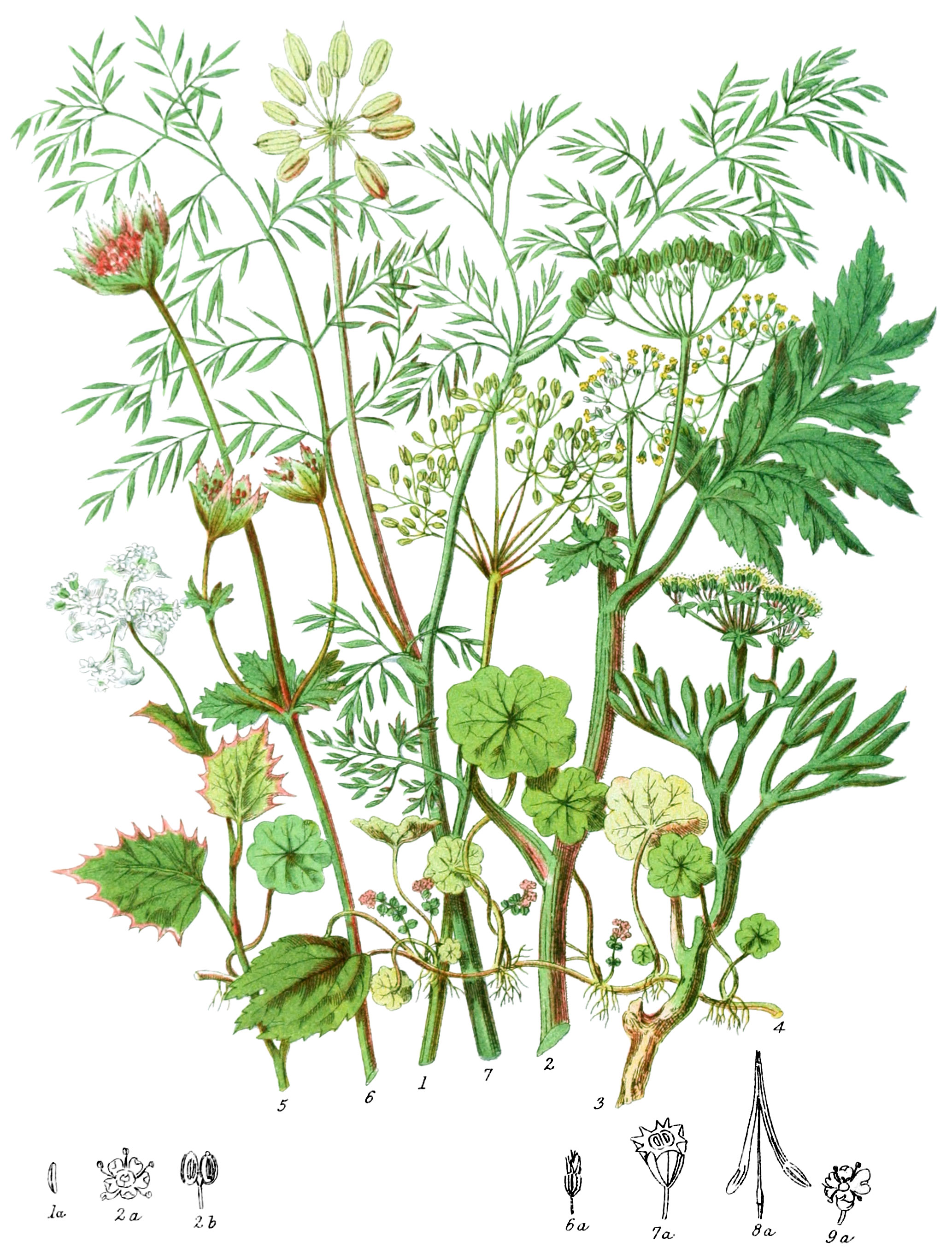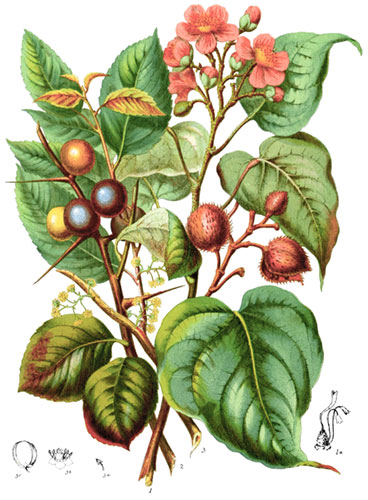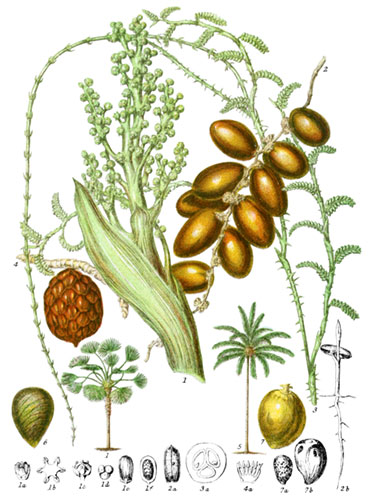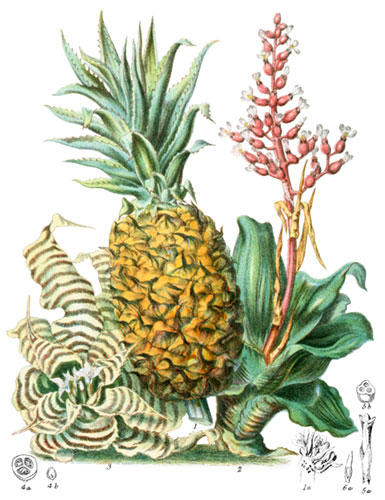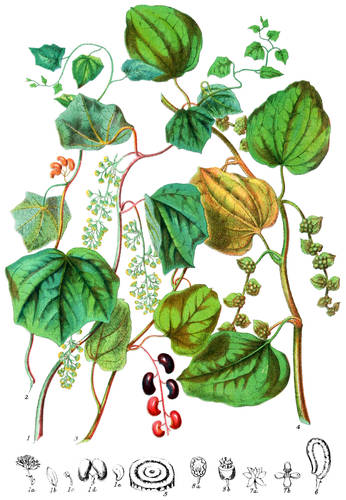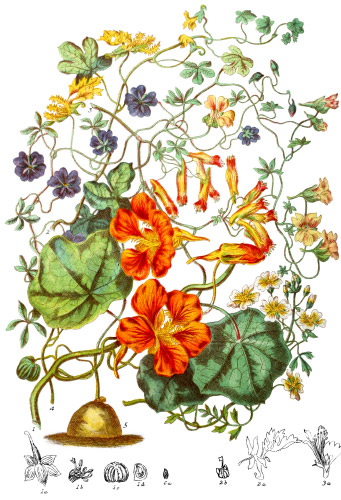Key characteristics
Herbaceous plants, and a few undershrubs, with solid or hollow furrowed knotted stems, containing occasionally milky juice. The leaves are usually divided, sometimes simple, with parallel veins, the leaf-stalk usually expanded into a wide sheath at the base. The flowers grow in umbels, generally surrounded by an involucre at the base: the calyx is above the ovary, either whole at the edge or having five teeth. The petals are five, inserted on the outer rim of a fleshy nectariferous disk, often bent inwards at the point, the outer petals sometimes the largest (9).* The stamens are five, alternate with the petals, curved in whilst in the bud. The ovary is below, crowned by the disk; it contains two cells, with a solitary pendulous ovule in each; the styles are two, distinct, persistent, with simple stigmas. The fruit is composed of two carpels, separable from a slender central axis, sometimes having a long bristly beak (8);† each carpel has elevated ridges, between which are linear receptacles of essential oil; the seed usually adheres to the covering, and contains abundant horny albumen.
This order is most nearly allied to Araliaceæ, but is distinguished by the fruit separating into two parts, and by the seed adhering to its covering.
Select plants in this order
Not all plants listed are illustrated and not all plants illustrated are listed.
- A watery acrid and poisonous liquid, a gum resinous milky juice, of stimulating properties, and an aromatic oil, are secreted by these plants. When the first two exist only in a slight degree, and mucilage and sugar predominate, several species are wholesome as food, and are cultivated in all European countries for the sake of the herbage or the roots. One of the most useful is Daucus Carota, frequent on a chalk soil in this country, easily recognised by the one dark flower in the centre of the white umbel; when cultivated, the root becomes enlarged, succulent, and sweet, and is known and esteemed as the Carrot; in some countries a strong spirit is distilled from it.
- Pastinaca (2) affords also a supply of nutritive food in the large white root.
- Apium Petroselinum is the common Parsley; A. graveolens, Celery, loses its acridity, and acquires size and crispness from the manner in which it is grown.
- Crithmum maritimum (3), Samphire, found always near the sea, but beyond the reach of the waves, is one of the best plants for pickle.
- The hollow stalks of Angelica are made into an excellent preserve with sugar; in Iceland, Norway, and Lapland, it forms an article of food to the peasants.
- Heracleum spodylium is not valued in England, but in Kamtschatka and Russia the young shoots are boiled and eaten.
- The Eryngium of our coasts is a variation from the general aspect of this tribe, being extremely stiff and prickly; when candied, it is of delicious flavour.
- The roots of Arracacha are a winter food in South America.
- Of the aromatic kind, the principal is Carum (1), known in the time of Pliny as one of the native plants of Caria; the seeds are used for several purposes, the roots are also eatable.
- Anethum includes Fennel and Dill; both have finely divided leaves; the latter is cultivated in the south of France for the sake of its medicinal seeds.
- The root of a variety of Fennel, called Finochio, is eaten at Naples.
- Pimpinella anisum yields the anise-seeds, employed to a considerable extent by French doctors and confectioners.
- The round seeds of Coriandrum have an agreeable aromatic taste, and are much used on the Continent as well as in Peru; the rest of the plant is of disagreeable odour.
- The chief species, yielding gum-resin from the root or stem, are Opopanax, supposed in the East to be a universal remedy; Galbanum of Ethiopia, and Ferula of Persia and the Levant, affording powerful medicine, and a stimulating condiment, highly relished by the Persians.
- The Hottentots prepare a strong beverage from the roots of Lichtensteinia.
- Some, especially of the aquatic species, contain extremely deleterious juices: Conium maculatum, Hemlock, is one of the most poisonous, known in remote ages, spoken of the by the Jewish prophets, described by Hippocrates, and selected as a certain means of death to Phocion and Socrates. Although a native of England, its injurious qualities are not so fully developed as in warmer parts of Europe.
- Œnanthe crocata and Cicuta virosa are both dangerous to men and cattle.
- Of those yielding fodder, Prangos pagularia (7) is supposed to be the most valuable for sheep; from the large fleshy root proceed thick tufts of long and finely cut leaves, abundant and nutritious.
- Heracleum giganteum, of Siberia, is said also to afford excellent provender, in height rivalling Ferula communis of South Europe, thought to be the tallest of herbs, recorded by Gerard to have attained fifteen feet in his garden in Holborn; it covers the isles in the Sea of Marmora, and was known and used by the ancient Greeks: in Sicily, the pith is used for tinder.
- Hydrocotyle (4) varies from the regular form of umbel; it is of interest as a genus widely dispersed over the earth; the leaves of H. Asiatica serve to heal slight wounds in India; H. umbellata is a native of Brazil; H. villosa belongs to the Cape.
- Leucolena (5) is an elegant exception to the general type of involucre.
- Bolax glebaria, of Chile, grows in close tufts, like some of the Alpine Saxifrages.
- Bupleurum is a genus with simple leaves; B. spinosissimum is seen on the shores of the Mediterranean.
- The poisonous species grow generally in low, shady, watery places, seldom on mountains; Phellandrium mutellinum contributes to the excellent pastures on the Alps, at 5500 feet. Several species, only an inch high, with heath-like leaves and large fruit, grow at the limits of perpetual snow, near Santiago, on the Andes.
Locations
In the northern regions of the world, this Tribe inhabits various localities, from the low marsh to the highest hills. It is rare in the Tropics, except on mountains, scarcely seen on the plains of India, abundant on the Himalayas. A few genera are frequent in South America; a very few belong to Africa or Australia.
Legend
- Carum carui, Caraway. Britain.
- Seed.
- Pastinaca sativa, Parsnip. England.
- Flower.
- Fruit.
- Crithmum maritimum, Samphire. Rocky Sea-shores, England.
- Hyrdocotyle vulgaris, Marsh Penny-wart. Marshes, England.
- Leucolena rotundifolia. Port Jackson.
- Astrantia maxima. Caucasus.
- Flower.
- Prangos pabularia, Hay-plant. Thibet.
- Section of Seed.
-
- Scandix Pecten-Veneris, Beaked Fruit.
-
- Daucus Carota. Flower.
- *9 was mentioned in the original description but only 9a was illustrated.
- †8 was mentioned in the original description but only 8a was illustrated.
Explore more
Posters
Decorate your walls with colorful detailed posters based on Elizabeth Twining’s beautiful two-volume set from 1868.
Puzzles
Challenge yourself or someone else to assemble a puzzle of all 160 botanical illustrations.
